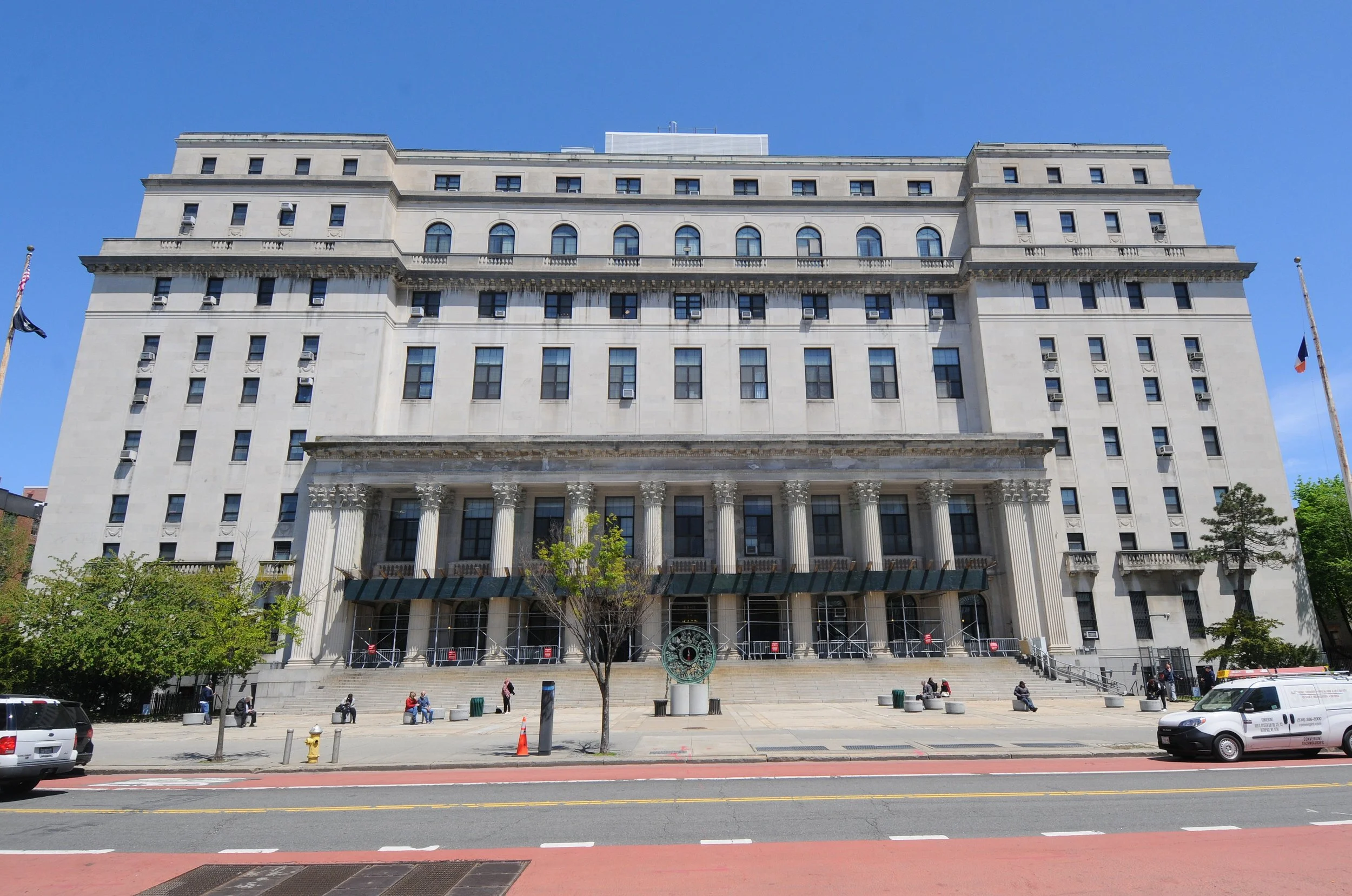Albany offers two visions for Supreme Court expansion
/Lawmakers in Albany are considering two competing bills, both of which are attempting to grow the number of Supreme Court justices. Eagle file photo by Walter Karling
By Noah Powelson
Judges and legislators across New York agree – the state needs more trial court justices across its courts to address the ever-growing case backlog plaguing the state’s court system.
Under New York’s constitution, each judicial district is allocated one Supreme Court justice per 50,000 residents. That limit, advocates say, is preventing the state from appointing the number of judges needed to address the burgeoning case demand.
This year, two bills are making their way through the legislature that offer competing visions of how to solve that problem.
One bill, introduced by Manhattan Assemblymember Alex Bores and Manhattan State Senator Brad Hoylman-Sigal and dubbed the Uncap Justice Act, would completely divorce the number of justices from a county’s population.
Advocates of the bill say the current population calculation, which was first created in 1846 and last modified in 1963, hasn’t kept pace with the times.
“[The bill] is important for a number of reasons, the primary one is that trials in New York take way too long [and] the silliest reason is there are not enough judges." Bores told the Eagle in a phone interview.
The Uncap Justice Act has received wide support from state leadership. Governor Kathy Hochul, Chief Judge Rowan Wilson, Chief Administrative Judge Joseph Zayas, Attorney General Letitia James, the New York City Bar Association and many others have all publicly endorsed the Bores/Hoylman-Sigal bill.
But another bill looking to expand the judiciary is also starting to gain steam in Albany.
Queens State Senator Leroy Comrie and Bronx Assemblymember Jeffrey Dinowitz introduced legislation early this year that would still preserve the limit but reduce the population needed to appoint new judges from 50,000 to 30,000. Supporters of the new bill say the legislation would give the state hundreds of new judges while preserving a cap, which they say remains necessary.
“I'm really happy and grateful that Assemblymember Dinowitz and Senator Comrie decided to take on this bill,” Queens Supreme Court Justice Carmen Velasquez told the Eagle. “It is the right thing to do for the Supreme Courts.
Supporters of the bill say the legislation will add over 260 justices to the bench throughout the state.
Velasquez is the president of the Queens County Supreme Court Justices’ Association, one of many judicial organizations that have voiced their opposition to the Uncap Justice Act and support for Comrie’s bill.
In an open statement signed by the Supreme Court Justices Association of the City of New York, the Queens Supreme Court Justices Association and others, the organizations argued the Uncap Justice act threatens the independence of the judiciary and politicizes the process of assigning judges to the bench.
“Any ‘new’ legislation affecting the judiciary’s number, just like the reapportionment or redistricting of our legislative counterparts, must be faithful to the constitutional mandate of separation of powers,” the statement reads. “The preservation of judicial independence is a cornerstone of our democracy. The Hoylman/Boris bill would destroy that balance, as the number of justices would become a political football.”
Several other notable bar associations, including the Latino Lawyers Association of Queens County, the Brandeis Association and the Macon B. Allen Black Bar Association, have also shared their opposition to the bill.
They argue a population method for the judicial cap ensures diversity on the bench and ensures judges are appointed to areas where the need is greatest.
“This methodology ensures that the voting rights of the voters are not diluted, allowing for equal
representation of the voter population,” the LLAQC said in a statement. “This framework protects against political overreach and helps ensure that voters in all communities, particularly those historically underrepresented, have equal access to justice and meaningful representation in the judiciary.”
While the Uncap Justice Act would eliminate the population formula from state law, it would not explicitly create any new judicial seats immediately. However, the legislature could begin the process of appointing new judges the year after the bill’s passage. Under the bill, justices would still need to be elected in their home county in order to make it to the bench.
The Dinowitz/Comrie bill, by lowering the population limit, would open more judicial seats upon its passage. Like the Uncap Justice Act, the process for electing judges to the new seats would stay the same.
In discussing criticisms about the Uncap Justice Act, Bores said any argument that removing the cap would politicize the judiciary are unfounded.
"Neither bill forces the legislature to create the judges, neither bill changes the process of appointing new judges," Bores told the Eagle. "I would implore everyone to actually read the bill."
Bores argued modifying the population limit was only a temporary solution, and the cap is long outdated for the state’s large population.
"If you loosen the cap, you are still preserving the problem," Bores said. "[The limit] was changed once in the 60s, if it’s modified now then the next time it needs to change again, probably none of us will be around."
Bores also argued the Uncap Justice Act, which passed the Assembly and State Senate last year, is much more likely to pass this year and the state could therefore start appointing judges sooner. Along with its support from the governor and chief judge, 60 assemblymembers and 3 State Senators are co-sponsoring the bill, including Queens Assemblymember Catalina Cruz. Notably, Assemblymember Dinowitz is also co-sponsoring the bill.
Seven assemblymembers are co-sponsoring the Dinowitz/Comrie bill, including Cruz. State Senator Luis R. Sepúlveda is the only lawmaker co-sponsoring the Senate version of the bill.
Currently, the two bills sit in committee.
While the two bills seem to offer different futures for the judiciary, some legislators say there is still plenty of common ground. Senator Comrie, who advocates for modifying the population limit, said the two bills are still aligned in spirit.
“I’m sure at the end of the day we will work out the differences between our bill and the Bores bill,” Comrie told the Eagle. “What’s important is we find ways to add seats to the judiciary and address [the] backlog.”




